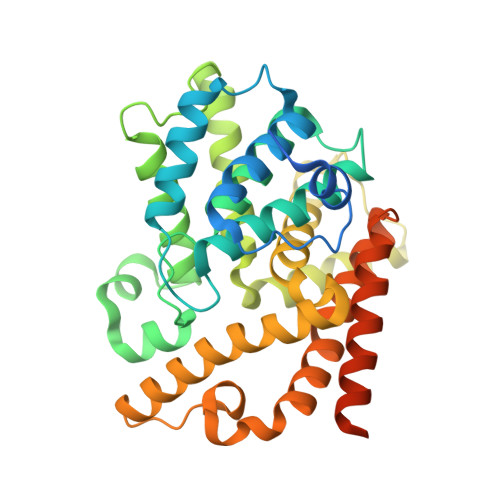Use of Structure-Based Design to Discover a Potent, Selective, In Vivo Active Phosphodiesterase 10A Inhibitor Lead Series for the Treatment of Schizophrenia.
Helal, C.J., Kang, Z., Hou, X., Pandit, J., Chappie, T.A., Humphrey, J.M., Marr, E.S., Fennell, K.F., Chenard, L.K., Fox, C., Schmidt, C.J., Williams, R.D., Chapin, D.S., Siuciak, J., Lebel, L., Menniti, F., Cianfrogna, J., Fonseca, K.R., Nelson, F.R., O'Connor, R., Macdougall, M., McDowell, L., Liras, S.(2011) J Med Chem 54: 4536-4547
- PubMed: 21650160
- DOI: https://doi.org/10.1021/jm2001508
- Primary Citation of Related Structures:
3QPN, 3QPO, 3QPP - PubMed Abstract:
Utilizing structure-based virtual library design and scoring, a novel chimeric series of phosphodiesterase 10A (PDE10A) inhibitors was discovered by synergizing binding site interactions and ADME properties of two chemotypes. Virtual libraries were docked and scored for potential binding ability, followed by visual inspection to prioritize analogs for parallel and directed synthesis. The process yielded highly potent and selective compounds such as 16. New X-ray cocrystal structures enabled rational design of substituents that resulted in the successful optimization of physical properties to produce in vivo activity and to modulate microsomal clearance and permeability.
- Pfizer Worldwide Research and Development, Groton, Connecticut 06340, United States. chris.j.helal@pfizer.com
Organizational Affiliation:




















